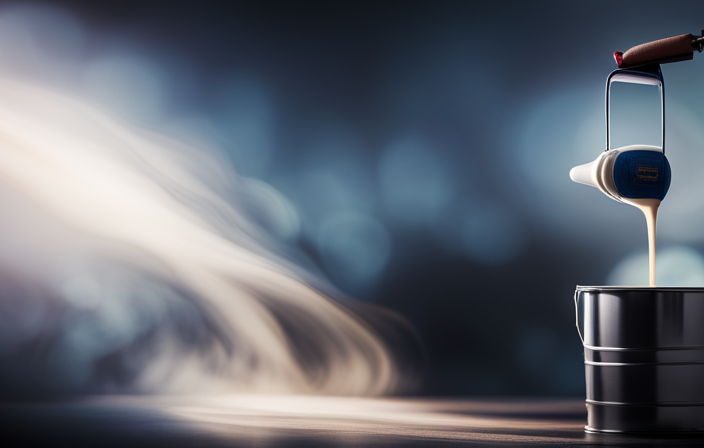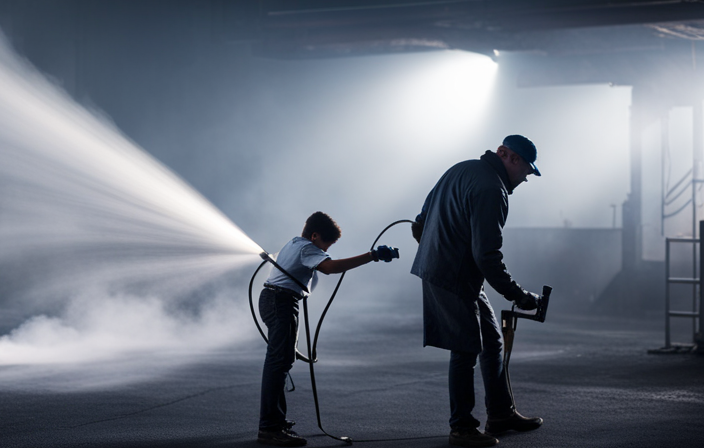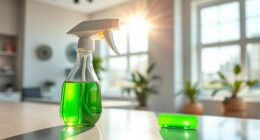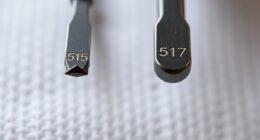Hello there! Picture this situation: you’ve been dreaming of giving your home’s walls a fresh coat of paint for a while now, but the thought of spending endless hours manually painting with a brush or roller is daunting. Fear not! Let me introduce you to the Krause & Becker Airless Paint Sprayer, designed to be your painting companion.
This little powerhouse is going to revolutionize the way you tackle your painting projects, making them faster, easier, and more enjoyable.
In this article, I’m going to walk you through the step-by-step process of setting up and using the Krause & Becker Airless Paint Sprayer. From unboxing and familiarizing yourself with the equipment, to preparing your painting area and choosing the right paint, I’ve got you covered.
We’ll also dive into adjusting the pressure and spray pattern, as well as cleaning and maintaining your sprayer for long-lasting performance.
So, grab your overalls and let’s get started on transforming your space with professional-quality results!
Key Takeaways
- Regular maintenance prolongs the lifespan of the Krause & Becker airless paint sprayer.
- Troubleshooting steps include checking power source connection, inspecting and cleaning/replacing the spray tip, looking for leaks and tightening connections, and adjusting pressure settings for optimal atomization.
- Proper surface preparation is essential and involves cleaning, sanding, and priming if necessary.
- Important painting techniques include maintaining a steady and even motion, overlapping each pass slightly, adjusting pressure and fan pattern for different surfaces, and starting with lower pressure and increasing if needed.
Unboxing and Familiarizing Yourself with the Krause & Becker Airless Paint Sprayer
When unboxing the Krause & Becker Airless Paint Sprayer, you’ll see a sleek and compact machine with all the necessary components neatly arranged inside the box.
The first thing you should do is carefully remove the sprayer from its packaging, being mindful of any fragile parts. Then, take a moment to familiarize yourself with the different components of the spray gun.
You’ll notice the trigger, which controls the flow of paint, and the nozzle, which determines the spray pattern. Additionally, there are knobs and dials that allow you to adjust the pressure and flow rate. Understanding how each part works is essential for achieving optimal results.
Once you feel comfortable with the spray gun, you can move on to preparing your painting area, ensuring a smooth and efficient painting process.
Preparing Your Painting Area
Before starting your painting project, it’s essential to make sure your painting area is properly prepared. Here are three important steps to take when preparing your painting area:
-
Covering furniture: To protect your furniture from paint splatters and drips, it’s important to cover them with drop cloths or plastic sheets. This will prevent any accidental damage and make clean-up easier.
-
Protecting floors: Paint spills can be difficult to clean, so it’s crucial to protect your floors. Lay down a drop cloth or plastic sheeting to create a barrier between the floor and any potential paint splatters or drips. This will save you time and effort in the long run.
-
Clearing the area: Before you begin painting, remove any obstacles or items that could get in your way. This includes rugs, decorations, and any other objects that could obstruct your painting process.
Now that your painting area is properly prepared, let’s move on to choosing the right paint and diluting it if necessary.
Choosing the Right Paint and Diluting it if Necessary
To ensure a smooth and flawless finish, you’ll want to select the perfect paint and, if needed, dilute it to achieve the desired consistency for effortless application.
When choosing paint types for your Krause & Becker airless paint sprayer, it’s important to consider the surface you’ll be painting and the desired finish. Latex paint is suitable for most surfaces and is easy to clean up, while oil-based paint provides a durable finish but requires mineral spirits for cleanup.
Understanding paint viscosity is crucial for proper spraying. Thin paints have a low viscosity and should be used as is, while thicker paints may need to be diluted with water or a paint thinner.
Once you’ve chosen the right paint and diluted it if necessary, you’re ready to move on to assembling and connecting the spray gun and hose.
Assembling and Connecting the Spray Gun and Hose
Now you can easily assemble and connect the spray gun and hose for a seamless and efficient painting experience with your Krause & Becker airless paint sprayer. Here’s how:
-
First, attach the gun to the hose by inserting the gun’s connector into the hose’s fitting and securing it tightly.
-
Next, ensure that the hose is properly connected to the paint sprayer unit by attaching it to the designated port.
-
Make sure all connections are secure and tight to prevent any leaks during operation.
-
If you encounter any difficulties during the assembly process, refer to the instruction manual for detailed diagrams and step-by-step instructions.
-
If you’re still facing issues, double-check that all components are clean and free from debris, as clogs can affect the spray pattern.
Now that the spray gun and hose are assembled and connected, let’s move on to adjusting the pressure and spray pattern for optimal results.
Adjusting the Pressure and Spray Pattern
Once you’ve got everything connected, it’s time to fine-tune the pressure and spray pattern, just like adjusting the strings on a guitar to achieve the perfect melody.
Adjusting pressure settings is crucial for achieving a smooth and even paint application. To start, locate the pressure adjustment knob on the sprayer and turn it clockwise to increase the pressure or counterclockwise to decrease it. It’s important to find the right balance, so start with a lower pressure and gradually increase it until you achieve the desired coverage.
Additionally, choosing the right spray nozzle size is essential for achieving the desired spray pattern. Different nozzle sizes produce different spray patterns, ranging from narrow to wide. Experiment with different nozzle sizes to find the one that works best for your project.
Once you’ve adjusted the pressure and chosen the nozzle size, you’re ready to practice on a test surface to ensure everything is working smoothly.
Practicing on a Test Surface
Before diving into your project, it’s a good idea to get some practice on a test surface to ensure you have the hang of it. When practicing with the Krause & Becker airless paint sprayer, there are a few techniques you can try.
Start by adjusting the pressure and spray pattern according to your desired outcome. Practice spraying in straight lines, overlapping each stroke by 50% to achieve an even coverage. You can also experiment with different nozzle sizes to see which one gives you the best results.
If you encounter any issues during practice, such as clogging or uneven spraying, refer to the troubleshooting tips in the user manual.
Once you feel confident with your practice, you can move on to applying the paint to your walls or furniture, ensuring a professional finish.
Applying the Paint to Your Walls or Furniture
Applying the paint with the Krause & Becker airless paint sprayer is not a breeze, said no one ever. However, with the right painting techniques and a little practice, you can achieve professional-looking results.
Before you begin, it’s essential to select the right spray tip for your project. The spray tip determines the width and flow of the paint, so choose a tip size based on the type of surface you’re painting. For larger areas, use a wider tip, while narrow tips are ideal for detailed work.
Once you have the right tip, hold the sprayer about 12 inches away from the surface and move it in a smooth, even motion. Start at one edge and work your way across or up and down, overlapping each pass slightly. This ensures even coverage and prevents streaks.
As you finish applying the paint, transition to the next step of cleaning and maintaining your Krause & Becker airless paint sprayer.
Cleaning and Maintaining Your Krause & Becker Airless Paint Sprayer
Now that you have successfully applied the paint to your walls or furniture using your Krause & Becker Airless Paint Sprayer, it’s important to know how to properly clean and maintain your equipment. Cleaning techniques and a recommended maintenance schedule are crucial for keeping your sprayer in optimal condition for future use.
To ensure effective cleaning, refer to the user manual for specific instructions on disassembling and cleaning each part of the sprayer. This will help prevent any leftover paint from clogging the system. Regular maintenance is also important to prolong the lifespan of your sprayer. This includes checking and replacing worn or damaged parts, lubricating moving components, and troubleshooting any potential issues.
In the next section, we will address troubleshooting common issues that may arise while using your Krause & Becker Airless Paint Sprayer.
Troubleshooting Common Issues
If you encounter any issues, troubleshooting common problems with your Krause & Becker Airless Paint Sprayer is essential to ensure a smooth painting experience. Here are some common solutions and troubleshooting techniques to help you out:
-
Check the power source: Make sure the sprayer is properly plugged in and receiving power.
-
Inspect the spray tip: Clean or replace the spray tip if it’s clogged or damaged.
-
Check for leaks: Inspect the hoses and connections for any leaks and tighten them if necessary.
-
Adjust the pressure: If the paint is not atomizing properly, adjust the pressure settings according to the manufacturer’s instructions.
-
Clean the filters: Dirty filters can cause issues with paint flow, so clean or replace them regularly.
By following these troubleshooting techniques, you can resolve common issues and continue with your painting project smoothly.
Now, let’s move on to some tips and tricks for achieving professional-quality results.
Tips and Tricks for Achieving Professional-Quality Results
To achieve professional-quality results with your Krause & Becker Airless Paint Sprayer, try implementing these tips and tricks.
Firstly, make sure to properly prepare the surface before painting. This includes cleaning, sanding, and priming if necessary.
Additionally, practice proper technique by keeping the sprayer moving in a steady, even motion, overlapping each pass slightly. This will help to avoid visible lines or streaks in the finished paint job.
Secondly, adjust the sprayer’s pressure and fan pattern according to the size and type of surface being painted to prevent overspray. Start with a lower pressure and gradually increase if needed.
You can also use masking tape and plastic sheets to protect surrounding areas from overspray.
By following these tips and tricks, you’ll be able to achieve professional-quality results with your Krause & Becker Airless Paint Sprayer.
Frequently Asked Questions
Can I use the Krause & Becker Airless Paint Sprayer for outdoor painting projects?
Yes, you can definitely use the Krause & Becker airless paint sprayer for outdoor painting projects. It is perfect for both indoor and outdoor applications. The airless technology ensures efficient and even coverage, saving time and delivering professional results.
How long does it take for the paint to dry after using the Krause & Becker Airless Paint Sprayer?
After using the Krause & Becker airless paint sprayer, the paint typically takes about 2-4 hours to dry. For a smooth finish, make sure to clean the nozzle regularly, use the correct paint consistency, and maintain a consistent spraying motion.
Can I use the paint sprayer on textured surfaces?
Yes, you can use the paint sprayer on textured surfaces. However, it is important to note that proper paint sprayer maintenance is crucial to avoid common issues such as clogging. Troubleshooting tips can help resolve any problems that may arise.
What safety precautions should I take while using the Krause & Becker Airless Paint Sprayer?
When using the Krause & Becker airless paint sprayer, it is important to prioritize safety. Before starting, make sure to wear protective clothing, goggles, and a respirator. Avoid pointing the sprayer at yourself or others, and keep a fire extinguisher nearby. Regular paint sprayer maintenance can help prevent common problems.
How do I properly clean the spray gun and hose after using the paint sprayer?
To properly clean the spray gun and hose after using the paint sprayer, I use top-secret, super-powered cleaning techniques. I carefully disassemble each part, scrub away any paint residue, and then rinse everything thoroughly. It’s like a spa day for my paint sprayer!
Conclusion
Well, after going through the entire process of setting up and using the Krause & Becker Airless Paint Sprayer, I can confidently say that it was an absolute breeze. Who would’ve thought that painting could be so easy and enjoyable?
From unboxing to cleaning, this sprayer has proven to be a reliable and efficient tool. So, if you’re looking to effortlessly transform your walls or furniture, I highly recommend giving this paint sprayer a try. Trust me, you won’t be disappointed!










